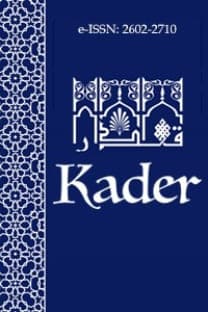MU‘TEZİLİZM’DEN ARTA KALAN MU‘TEZİLE
Basra Mutezilesi daha tecrübeli ve daha büyük itibara sahip olmakla birlikte, Bağdat, Abbasilerin başkentiydi ve Mutezilenin oradaki temsilcileri Abbasi hükümetinin önde gelen şahsiyetlerine daha yakındılar. Halife Me'mûn döneminde(813-833) bu yakınlık bariz bir şekilde gün yüzüne çıkmıştır. Bağdat Mutezilesi, Halife Me'mûn tarafından planlanan, resmî soruşturma(Mihne) olarak bilinen politik olayda doğrudan müdahaleci olarak gözüktü. Halife Me'mûn, iktidarının başlangıcından itibaren, çoğu tartışmalı olan pek çok teolojik görüşü devletin sorunlarına uygulamaya çalıştı. İktidarın güvenliğini ve sürekliliğini korumaya yönelik bu politikanın temeli i'tizalî öğretilere dayanmaktaydı. İ'tizalî öğretilerin ideolojik kullanımı Mu’tezilizmi yaratmıştır. Bu bağlamda Mu’tezilizm, i'tizalî görüşlerin siyasal ve İdeolojik anlamda kullanımını ifade etmektedir ki, Me'mûn, Mu'tasım ve Vâsık dönemi Abbasi iktidarının inançsal, düşünsel ve kültürel alanda uyguladığı siyasal projenin adıdır.5 İktidarın güvenliğinin ve sürekliliğinin korunmasına yönelik uygulanan bu siyasal stratejinin teorisi Mu’tezili görüşlerden, teorisyenleri ise Mu’tezili temsilcilerden oluşmaktaydı.
Anahtar Kelimeler:
MU‘TEZİLİZM, Basra Mutezilesi, Halife Me
The Mu’tazila as the Remainder of Mu’tazilism
Mu’tazilism is the name of a political project(mihna) al-Wathiq put into practice in the theological, entellectual and cultural areas. The idea of “Created Qur’an” was the basic argument of this political project. The founders of this political strategy were the Mu’tazili representatives. Around the year 850, Caliph alMutawakkil as the revivalist of the sunna, started the counter-mihna process. Thus anti-Mu’tazili process began. After its defeat at the hands of the traditionalists(ahl alhadith) in 850, the Mu’tazilite school of thought has been outlawed, its teachings and writings were banned. In the following years, the Baghdad Mu’tazila in particular, and the school of Basra as well, fell into political disfavor. Both schools subjected popular resentment and mistrust. This article is about the Mu’tazila’s survival through the opposition of the traditionalists. During the struggle of the Mu’tazili teachings were spread by activities of Mu’tazili theologians in different regions of Islamic World. The pupils trained by the Mu’tazili theologians propagated the Mu’tazili teachings in many regions such as Baghdad, Basra, Khurasan, Spain, Egypt, Rayy, Transoxiana, Nishapur, Khwarazm and Yemen. Especially the Zaydi branch of Shi’a hold to Mu’tazilite doctrines. During the final phase of Mu’tazilism, the Baghdad school gradually merged into the Zaydi school.
Keywords:
Mu’tazilism Created Qur’an, traditionalists, Zaydis,
- Başlangıç: 2003
- Yayıncı: Mehmet BULĞEN
Sayıdaki Diğer Makaleler
Ebu'l-Muin en-Nesefi'nin İnsan Fiilleri Probleminde Mutezile'ye Yönelttiği Bazı Eleştiriler
MU‘TEZİLİZM’DEN ARTA KALAN MU‘TEZİLE
İSİMLER’DEN KELİMELER’E: ADEM’DEN İBRAHİM’E İNSAN ZİHNİNİN TEKÂMÜLÜ
Frankfurt Goethe Üniversitesi İslam Dini ve Kültürü Araştırmaları Enstitüsü
İslam Düşüncesinde Kaderci Anlayışın Sosyal ve Kültürel Temelleri
Kur'an'ı Kerim'de Kendilerine "Yazıklar Olsun" Denilenler
